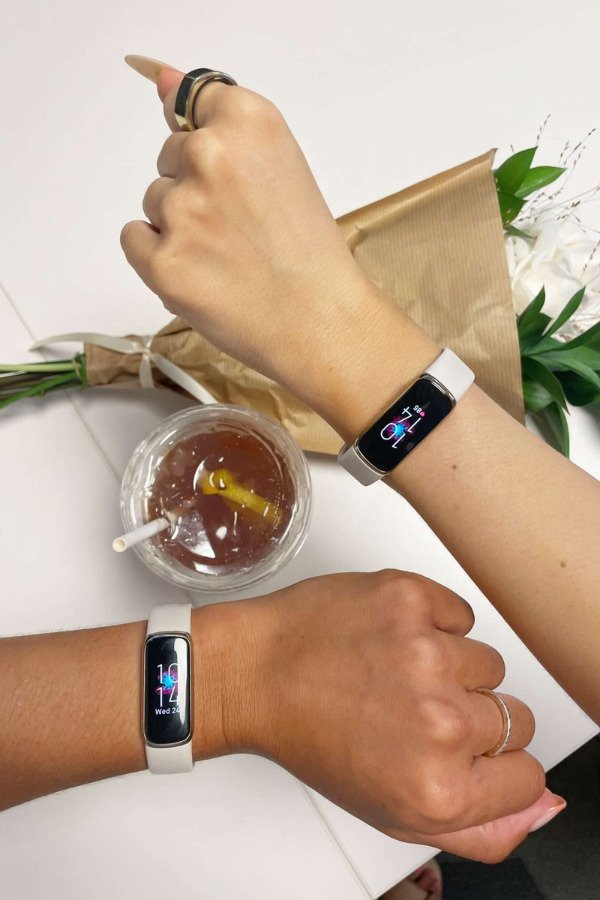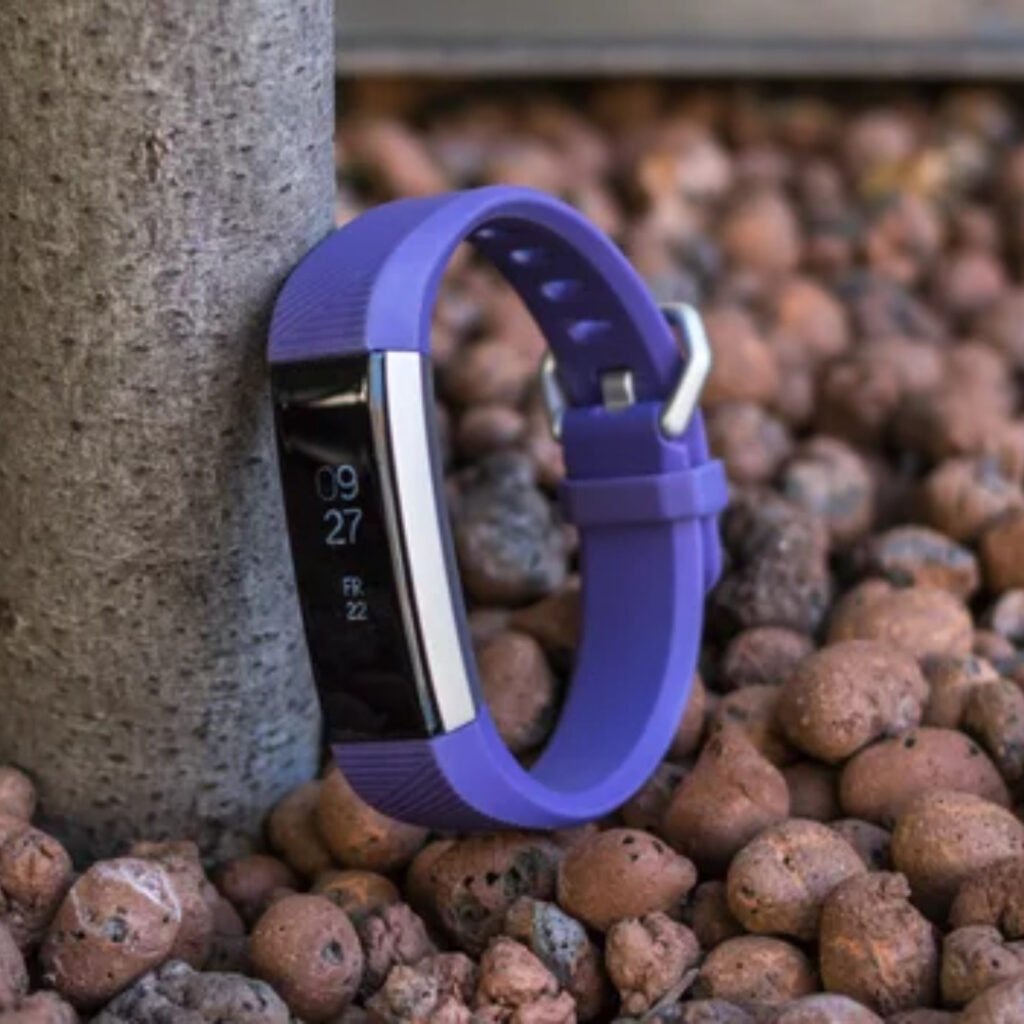Stay Fit with Fitbit: Your Ultimate Companion for Active Living and Peak Fitness
"
In this article, we will delve into Fitbit’s world, which is far more than just tracking steps and calories burned.
Learn exclusively on The One Liner, how a clever wearable technology is revolutionizing the way we monitor sleep patterns and track calorie intake for a comprehensive approach to better health and well-being.
Fitbit was founded in 2007 by James Park and Eric Friedman employing modern wearable technology with the simple yet innovative purpose of empowering individuals to take control of their health.
Fitbit initially started as a startup, and later it became a global success story that was eventually acquired by Google, the largest tech company, in 2021.
Currently, Fitbit has 37 million active users since 2022 from around the world making it the second largest brand after Apple watches.
The Early Triumphs
Fitbit’s initial versions were quite popular and attracted the interest of both fitness lovers and young adults.’
Fitbit made a name by encouraging fitness tracking via sleep analysis, step counts, and other features such as .
- Distance Traveled
- Wireless Syncing with Smartphone
- Calories Monitoring
What hit its audience was its stylish appearance to sleek designs to easy-to-use interface.
But here is a rule!
You can’t sustain in a market for so long if you are not innovating enough with your product.
Post its success after the launch, Fitbit has been consistently innovating itself.One of them is its sensors and wireless technology in its wearable fitness device.
Sensors and Wireless Technology in Wearable Fitness Devices
The journey kicked off with some excellent sensors and wireless magic. Fitbit didn’t stop at step counts; rather it changed how we consider our health.
Started with a simple step counter.
But guess what?
Fitbit devices are like health detectives equipped with fascinating technologies!
Fitbits have sensors that detect your movements, heartbeats, and more, such as heart rate monitors, accelerometers, and even gyroscopes to track movement and steps.
Fitbit communicate with your phone via Bluetooth, connect to Wi-Fi for rapid updates, and some even allow you to pay with NFC without a wallet.
It’s like having a healthy buddy who is constantly connected and on the move!
Over time, Fitbit’s product line grew to accommodate a broader range of needs and lifestyles. Here is the list of Fitbit’s Product Range.
Fitbit's Product Range
Every model, from the basic Fitbit Flex to the more sophisticated Fitbit Charge, Versa, and Sense, added something unique to the mix.
One of Fitbit’s first models to be released was the Flex. The bracelet was simple and elegant, made for basic activity tracking.
The gadget included functions like
- Step Count
- Incoming calls or texts alerts
- Daily step goals
From the Fitbit Flex, the Fitbit Charge represented a considerable advancement. With the use of this device’s OLED display, now its users could monitor more specific data, such as
2.1.Sleep patterns
Sleep tracking on the Fitbit Charge provided customers with insights into sleep length, quality, and patterns, allowing them to change habits for better rest and general health.
2.2.Heart rate monitoring
Fitbit devices with heart rate monitoring analyzes exertion levels during activities, assisting users in understanding workout intensity. It enables customized exercise routines for maximum efficiency and security.
Compared to the Fitbit Flex, the Fitbit Charge provided a more thorough and improved health-tracking experience.


Fitbit’s debut into the smartwatch industry with the Fitbit Versa was a significant milestone for the company.
With its larger features such as:
3.1. Larger Color Display
When compared to prior Fitbit models, the Versa had a larger, more brilliant color display, making it easier to see notifications, fitness stats, and other information.
3.2. Music Playback
The Versa supported music playback on spotify, allowing users to store and play music directly from the watch, as well as control music playing on a smartphone connected to the watch.
3.3. Guided Breathing Sessions
Some models included guided breathing sessions to assist users with stress management and relaxation strategies.
3.4. NFC with Fitbit Pay
Some Versa models included NFC technology(Near-field communication is a short-range wireless connectivity technology that lets NFC-enabled devices communicate with each other includes mobile phones, tablets, laptops, and wearables), which enabled contactless payments via Fitbit Pay, making it a handy way to make purchases without a physical wallet.
3.5. Personalized Watch Display
Users could personalize their watch faces by selecting from a variety of designs and information layouts to display preferred fitness stats or other data at a glance.
3.6. Water Resistance
The Versa was built with water resistance in mind, making it ideal for recording swim sessions and wearing in the shower or pool.
The Fitbit Versa merged smartwatch function with enhanced health and fitness tracking to provide users with a more comprehensive and versatile experience in a single device.
The Fitbit Sense is similar to an advanced health watch. It goes above and beyond tracking steps and heartbeats.
This device measures your electrodermal activity, or how your skin reacts to stimuli, as well as your stress levels and skin temperature.
This compact wrist device contains a great deal of advanced health features!
Fitbit wasn’t merely about step counts and calorie tracking. It concentrated on several healthcare matrixes.
Let’s go into the details below!
Beyond Steps with Fitbit’s Varied Health Matrixes






The Turning Point
Google Acquires Fitbit in 2021
Google acquired Fitbit in 2021, intending to fuse Fitbit’s knowledge of wearable technology with Google’s data and artificial intelligence skills.
The objective was to create and offer people more individualized and integrated health solutions to promote breakthroughs in wearable technology and health insights.
Since the acquisition, Fitbit has kept up its pace. The brand has embraced new growth opportunities, evolving by integrating health data, AI, and machine learning which enhances user experiences with tailored health insights.
Final Thoughts
As Fitbit continues to Grow
Fitbit’s constant commitment to promoting health is evident throughout its history, from startup to Google subsidiary.
It is revolutionizing wearable health tech, delivering complete insights into well-being with innovation at its center. Fitbit is poised to transform how we manage our health as healthcare evolves.
Subscribe to new post
The One Liner
Useful Links
Order Related Queries
Useful Links
Order Related Queries





